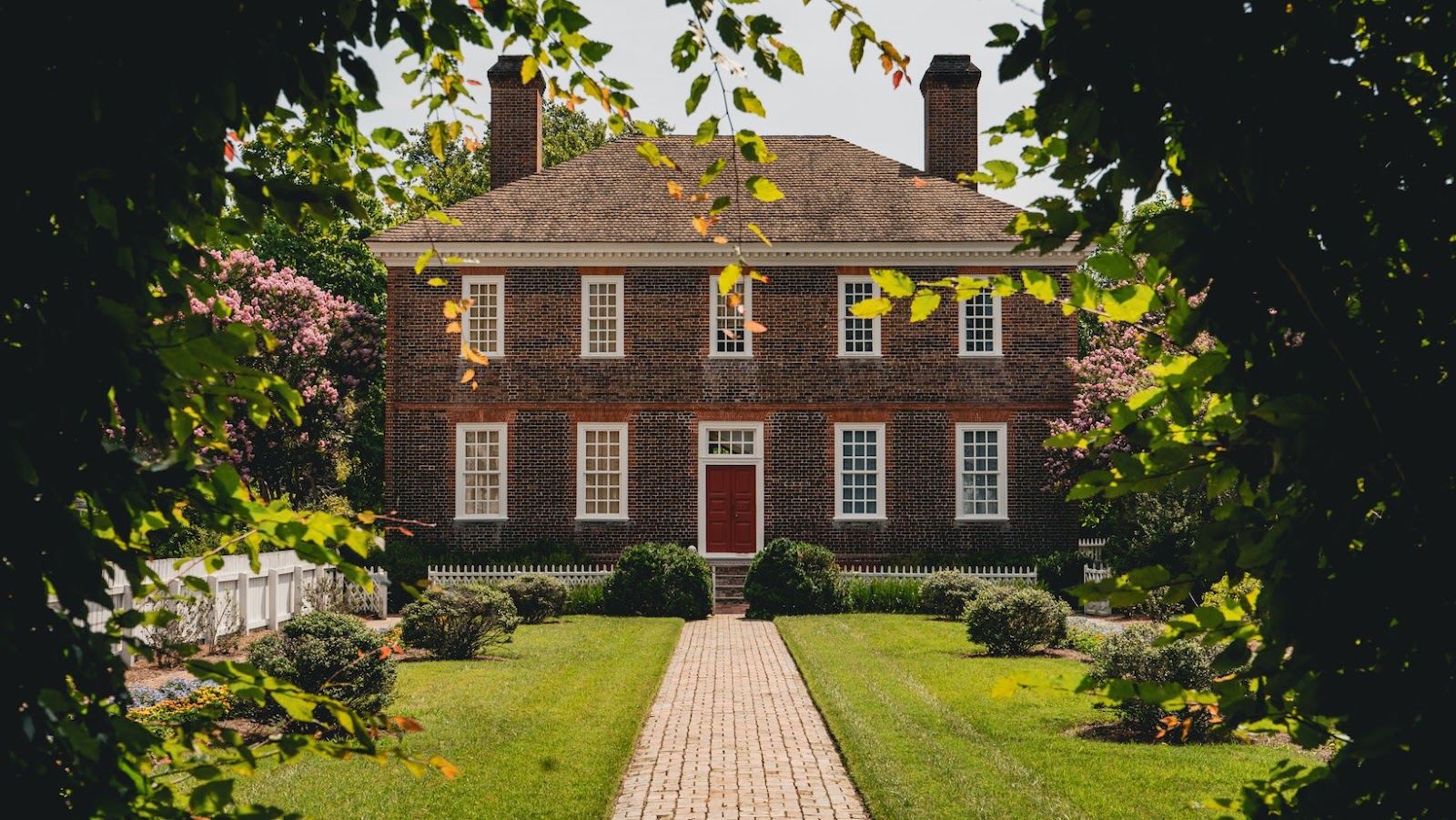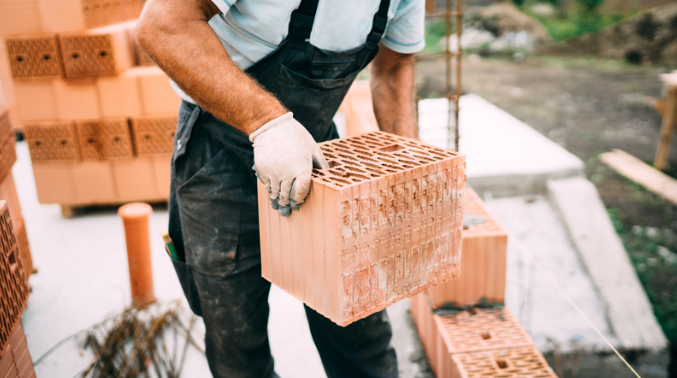History of Masonry Construction
Masonry construction has been around for centuries, originating in ancient Egypt and China. Through the years, masonry construction has evolved and become an important part of modern architecture and construction.
From the very beginning, masonry construction has been defined by rows or layers of stone brick or block and is essential in creating strong and durable structures. In this article, we will look at the history of masonry construction and discuss some of the advancements that have been made in this field.
The Traditional Technique of Bricklaying
The traditional technique of bricklaying involves laying bricks in a specific pattern to create a stable and attractive wall. This technique has been used for centuries in the construction industry and has become an important part of history.
Each row or layer of brick or block in masonry construction is referred to as a “course”. In traditional bricklaying, there are a few different patterns or styles that can be used for laying courses, including running bond, stack bond, and Flemish bond. These patterns are created by laying the bricks or blocks in a specific arrangement to ensure stability and durability of the structure.
Looking forward, the future of masonry construction is promising as it incorporates new technology and innovations such as insulated concrete forms, high-performance building envelopes, and prefabricated masonry components. These improvements make modern masonry construction faster, more efficient, and more sustainable.
Evolution of Masonry Construction Techniques
Masonry, the art of building with stone, brick, or concrete blocks, has been around for thousands of years and has evolved drastically over time. Ancient masons used simple tools to carve and shape blocks of stone that were then laid in horizontal rows or courses, with mortar in between to secure the stones in place. This technique is still used today but with significant technological upgrades.
In modern masonry construction, the rows or layers of stone, brick or block are called courses. Masonry construction has come a long way from the simple stacked stone walls of the ancient times to the durable and sustainable structures of today. The future of masonry construction looks very promising, with new technologies and advancements emerging every day to improve construction techniques and materials.
Current Challenges Faced by Masonry Construction
Masonry construction has come a long way since its ancient origins, but it still faces a number of significant challenges today. One of the primary challenges is the shortage of skilled masons and laborers. As a result, there is a growing demand for more efficient and cost-effective construction methods and materials.
Another challenge is the issue of building codes and regulations, which can vary widely from region to region and make it difficult to design and construct masonry structures that meet all the necessary requirements. Despite these challenges, the future of masonry construction looks bright. With the development of new technologies and construction methods, masonry is becoming more versatile, sustainable, and energy-efficient than ever before.
In masonry construction, the rows or layers of stone, brick, or block are called “courses.” The careful placement and alignment of these courses are essential to ensure the structural integrity and aesthetic appeal of the finished masonry structure.
Pro tip: To overcome the shortage of skilled masons, it is important to invest in training and education programs to attract and retain new talent in the industry.
Advancements in Masonry Construction
Building with stone, brick and block is a technique that has been used for centuries. Over time, the techniques involved in masonry construction have advanced and become more efficient. In this article, we’ll discuss the current advancements in masonry construction and how these advancements are changing the way these materials are used. We’ll also look at what the future may hold for this timeless craft.
Emerging Trends in Masonry Construction
Masonry construction is evolving, and new trends are emerging in the industry as masons look for more efficient, sustainable, and visually appealing ways to build structures using stone, brick, or block. One of the most significant advancements in masonry construction is the shift towards using mortarless or dry-stack systems, which eliminates the need for mortar and speeds up construction times while retaining the durability and aesthetics of traditional masonry.
Another trend is the use of innovative materials such as autoclaved aerated concrete (AAC) blocks, which are lightweight, durable, and energy-efficient. Moreover, prefabrication of masonry components off-site is becoming increasingly popular, allowing for more precise and efficient assembly on-site.
In masonry construction, the rows or layers of stone, brick, or block are called “courses”. Different patterns can be created by varying the size, shape or color of the masonry units, or by changing the orientation or bond of the courses. These trends in masonry construction are helping to shape the future of the industry, leading to more sustainable, efficient, and aesthetically pleasing buildings.
Technology Advancements in Masonry Construction
Masonry construction has advanced significantly through technology in recent years, offering faster and more efficient building processes, as well as increased durability and overall sustainability for buildings. One such advancement is the use of BIM (Building Information Modeling) software, which allows for the creation of detailed 3D models of masonry structures that aid in precise planning and execution. Additionally, robotic bricklaying machines have entered the scene, capable of laying bricks at a much faster pace than human labor can. This has resulted in reduced construction costs and quicker project turnarounds.
In masonry construction, the rows or layers of stone, brick or block are commonly called courses. With the help of advancements in construction technology, these courses can now be laid more accurately, quickly and efficiently than ever before, resulting in high-quality, durable masonry structures that stand the test of time.

Benefits of Using Advanced Masonry Techniques
Using advanced masonry techniques in construction offers several benefits, including durability, cost-effectiveness, and ease of installation. Such techniques are particularly useful for creating complex masonry structures such as arches, vaults, and domes. In addition to this, they enhance the structural integrity of a building and improve energy efficiency by providing superior insulation.
One such technique that is gaining popularity is the use of “courses” in masonry construction. Courses refer to the rows or layers of stone, brick or block that are set in a pattern for building walls or other masonry structures. By using courses, masons can ensure that the surface of the structure is level and even while also adding an aesthetic appeal. With advancements in masonry construction, this technique is expected to become even more prominent in the future.
Sustainable Masonry Construction
Masonry construction, with its long and rich history, is known for being a sustainable and reliable form of building. Masonry can be found in structures ranging from the pyramids in Egypt to the cathedrals of Europe. As the technology and materials evolve, so do the efficient and sustainable capabilities of the masonry industry. Let’s take a closer look at sustainable masonry construction and how it can be used in a green building and construction context.
Sustainable Masonry Materials
In sustainable masonry construction, there are several materials that are environmentally friendly and offer long-lasting durability. These materials can significantly minimize the consumption of natural resources and reduce the carbon footprint of masonry structures.
Sustainable masonry materials include:
- Recycled bricks: These are produced by crushing old bricks and mixing them with cement or lime. This process reduces the amount of waste in landfills and saves energy.
- Stone: Stones such as limestone, granite, and sandstone are abundant, durable, and can be reused in new construction.
- Fly Ash Concrete: This material is composed of industrial waste byproducts such as fly ash, slag, and silica fume. This composition makes the concrete mix stronger and reduces the amount of cement required.
- Straw bales: Straw bales are used as insulation and are a renewable and reusable source of material in masonry.
In masonry construction, the rows or layers of stone brick or block are called courses. Using sustainable masonry materials in these courses can significantly reduce the building’s environmental impact.
Pro tip: Incorporating sustainable materials in construction can significantly reduce construction waste, energy consumption, and greenhouse gas emissions.
Sustainable Masonry Construction Techniques
In masonry construction, the rows or layers of stone, brick, or block are called courses.
To adopt sustainable masonry construction techniques, here are some tips worth following:
- Use locally sourced materials: Choose the materials that were extracted, produced and transported locally. This reduces carbon emissions generated during transportation.
- Use high-efficiency insulation: When building your masonry structure, use insulation materials that have a high R-value rating. This reduces the amount of energy that you need to heat or cool your building.
- Choose durable materials: Choose a material that is durable and has a long lifespan. This prevents the need for frequent repair and replacement of masonry materials, saving energy needed to manufacture new materials.
- Implement rainwater harvesting systems: Install rainwater harvesting techniques to collect and conserve water for use in irrigation, flushing and other non-consumptive uses. This will help conserve water.
Overall, sustainable masonry construction is the future, and by adopting these techniques, we can contribute to a cleaner, greener planet.
Benefits of Sustainable Masonry Construction
Sustainable masonry construction is not only eco-friendly but also offers several benefits over traditional construction methods. In masonry construction, the rows or layers of stone, brick, or block are called courses, and sustainable masonry construction offers several benefits over traditional construction methods, including:
- Durability: Masonry structures are durable and long-lasting, requiring minimal maintenance over time. Structures built with sustainable masonry construction methods are more resistant to fire, water damage, and natural disasters.
- Energy Efficiency: Masonry structures offer better insulation and thermal mass, keeping the interior temperature cool in the summer and warm in the winter, reducing the need for additional heating and cooling.
- Cost-Effective: Sustainable masonry construction methods are cost-effective in the long run because of the low maintenance required for the structure.
- Aesthetic Appeal: Masonry structures have an aesthetically pleasing appearance, with a wide range of color options, textures, and finishes available.
Using sustainable masonry construction methods is the future of construction, offering numerous benefits to the environment and the building owner.
The Future of Masonry Construction
Masonry construction has been around for centuries; it is the traditional building technique that sees walls constructed using rows or layers of stone, brick or block known as courses. With the advent of modern technology, the construction industry is rapidly evolving and masonry construction is not immune to the transformation.
Let’s dive into the ins and outs of masonry construction and how it will likely shape the future.
The Role of Automation and Robotics in Masonry Construction
The integration of automation and robotics in masonry construction is revolutionizing the industry, offering faster, safer, and more efficient ways of building. Automation and robotics technology is capable of handling routine tasks and heavy-duty labor, freeing up humans to carry out more complicated tasks that require finesse and creativity.
In masonry construction, rows or layers of stones, bricks, or blocks are called courses. Automation and robotics technology has taken over the heavy and monotonous work traditionally carried out by masons such as cutting and laying bricks or blocks in courses. This technology has made masonry construction safer, reduces the risk of worksite accidents, and increases efficiency by completing tasks quickly and accurately.
However, the future of masonry construction will see technology and humans working in tandem as machines cannot replicate the artistry and creative variations of the human touch. As the industry continues to evolve, the role of automation and robotics in masonry construction will continue to be a significant factor in increasing efficiency and improving safety.

Breakthrough Developments in the Field of Masonry Construction
The breakthrough developments in the field of masonry construction have introduced innovative methods and materials, making the future of masonry construction brighter than ever. One such innovation is the introduction of “courses” or “wythes,” which are the horizontal rows or layers of stone, brick, or blocks that make up a masonry structure. These courses are now being constructed with various materials, including concrete, brick, and natural stone, to improve the durability and sustainability of masonry structures.
Another significant development is the use of advanced adhesive technologies, such as chemical grouts and epoxies, to improve the strength and stability of masonry structures. These breakthroughs have reduced the reliance on traditional masonry techniques that require the use of mortar. With these advancements and a continued focus on sustainability and energy efficiency, the future of masonry construction looks promising.
Pro tip: If you’re planning a masonry project, be sure to consult with professionals who have experience with the latest techniques and materials in masonry construction.
Current Research and Potential Areas of Innovation
Innovations are underway in the field of masonry construction that will have a profound impact on the future of the industry. A few promising areas of development include:
- Enhanced Durability: Researchers are exploring new methods of fortifying masonry structures to increase their resilience against natural disasters, wear and tear over time, and other environmental stressors.
- Sustainable Materials: Innovations in masonry construction are shifting toward using more sustainable and environmentally-friendly materials in their projects.
The rows or layers of stone, brick or block in masonry construction are called courses. These courses can be made up of a variety of materials, including concrete, brick, and stone, and are carefully laid and bonded together to create a strong and durable structure.
As technology continues to advance, there is immense potential for masonry construction to become even more efficient, sustainable, and cost-effective.
Rows or Layers of Stone or Brick Called in Masonry Construction
In masonry construction, the rows or layers of stone or brick are called “courses”. Courses are the horizontal layers of masonry bonded together with mortar that create the visible pattern of a brick or stone structure.
Each course is made up of individual units, whether they are bricks, stones, or blocks, that are laid in a specific pattern to create the desired look and function of the finished structure. The thickness, depth, and width of each course can vary depending on the design and load-bearing requirements of the wall or structure being built.
Understanding the basics of masonry construction, including key terminology like courses, is essential to anyone pursuing a career in architecture, engineering, or construction. It ensures proper communication and coordination between the various professionals involved in the design and construction of a building or structure.
Pro Tip: When planning a masonry project, work closely with your contractor to select the right materials and course patterns to achieve the desired results.
Different types of Masonry Bonds
In masonry construction, the rows or layers of stone, brick, or block are referred to as courses. The way in which these courses are arranged and interlocked is called the masonry bond.
Here are some different types of masonry bonds:
- Stretcher bond: This is the most commonly used bond in which bricks are laid in a running bond pattern.
- English bond: In this bond, each course comprises alternate layers of headers and stretchers.
- Flemish bond: This bond uses alternate headers and stretchers within the same course, creating a pattern of alternating long and short faces.
- Stack bond: This bond involves stacking bricks in a vertical pattern, without any overlapping, creating a clean and modern look.
Choosing the right masonry bond is essential to ensure the strength, stability, and aesthetic appeal of your structure. Always consult a professional mason to determine the best bond for your construction project.
Types of Masonry Units or Building Blocks
In masonry construction, building blocks are also referred to as masonry units. There are various types of masonry units or building blocks used in constructing a building, each with its unique properties and characteristics. These include brick, concrete block, stone, and terra cotta.
- Brick: A rectangular-shaped masonry unit made of clay that is hardened by firing in a kiln. Bricks come in various sizes and colors.
- Concrete block: A masonry unit made of cement, water, and aggregates such as sand, gravel, or crushed stone. Concrete blocks come in various sizes and shapes.
- Stone: A natural masonry unit of various types such as granite, limestone, sandstone, or marble. Stones come in various sizes and textures.
- Terra cotta: A fired clay masonry unit that is commonly used for decorative purposes. Terra cotta units come in various shapes and sizes.
The rows or layers of stone, brick, or block in masonry construction are called courses. Pro Tip: Using different types of masonry units and bond patterns can enhance the visual appeal of a building.
